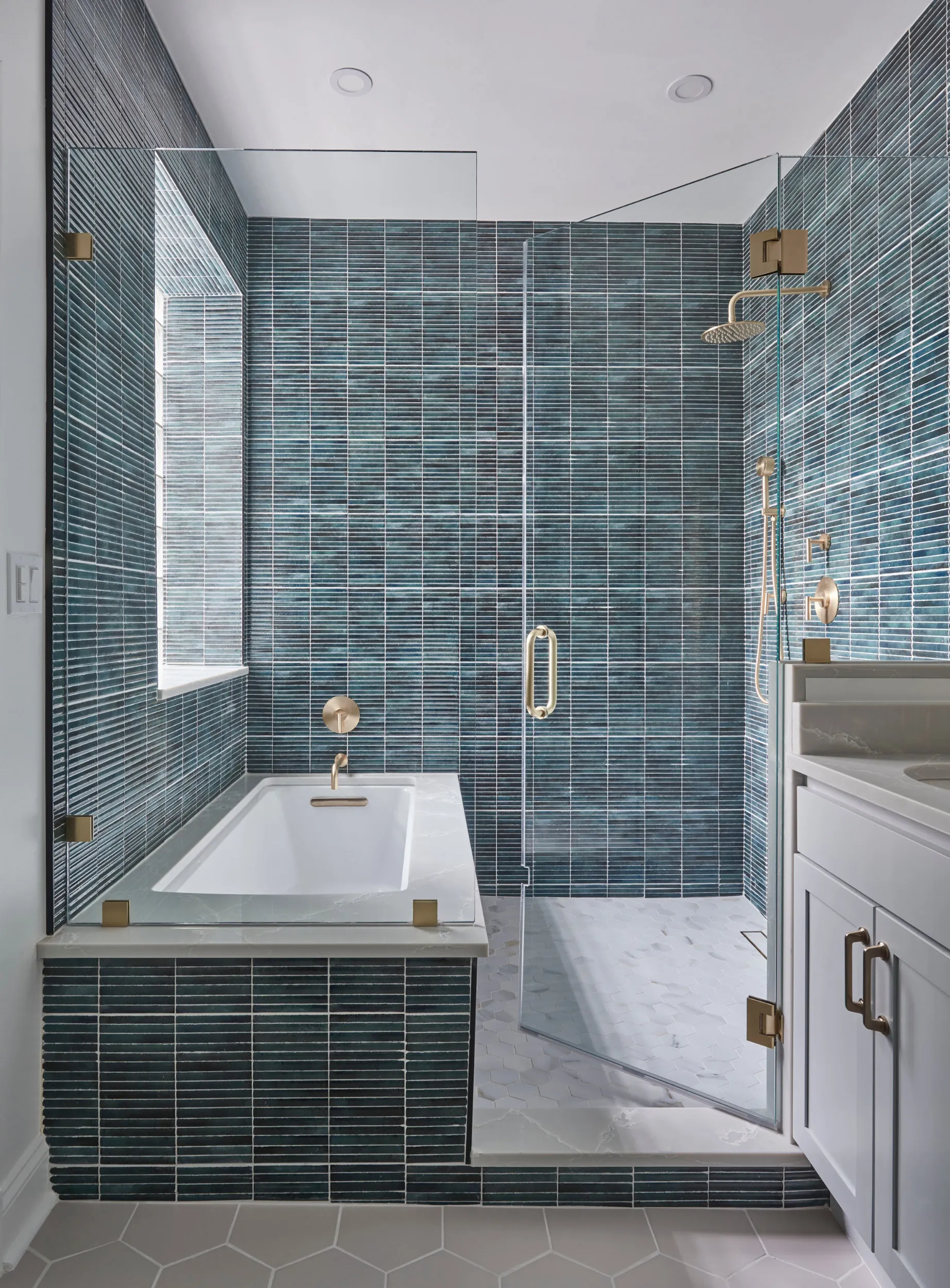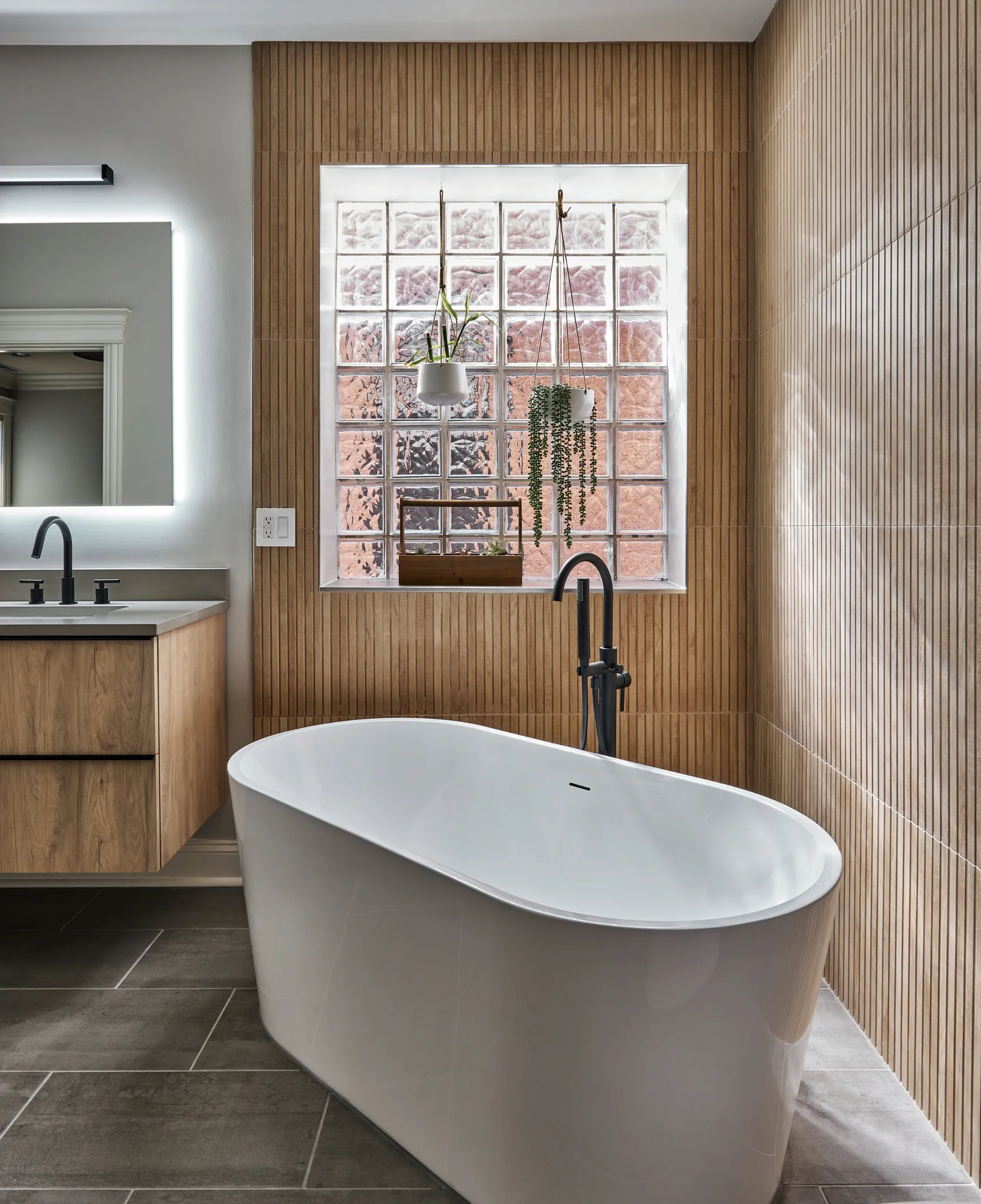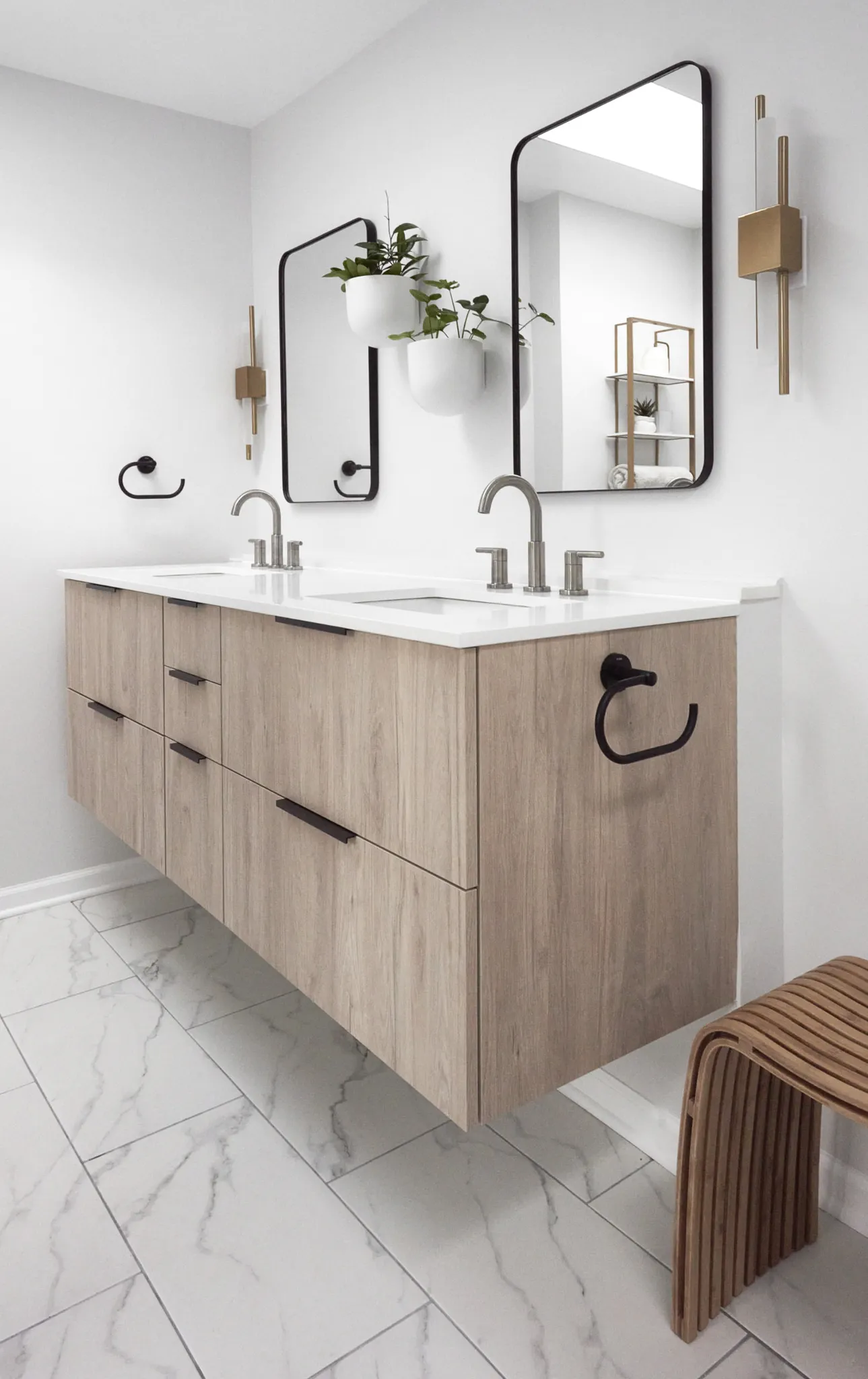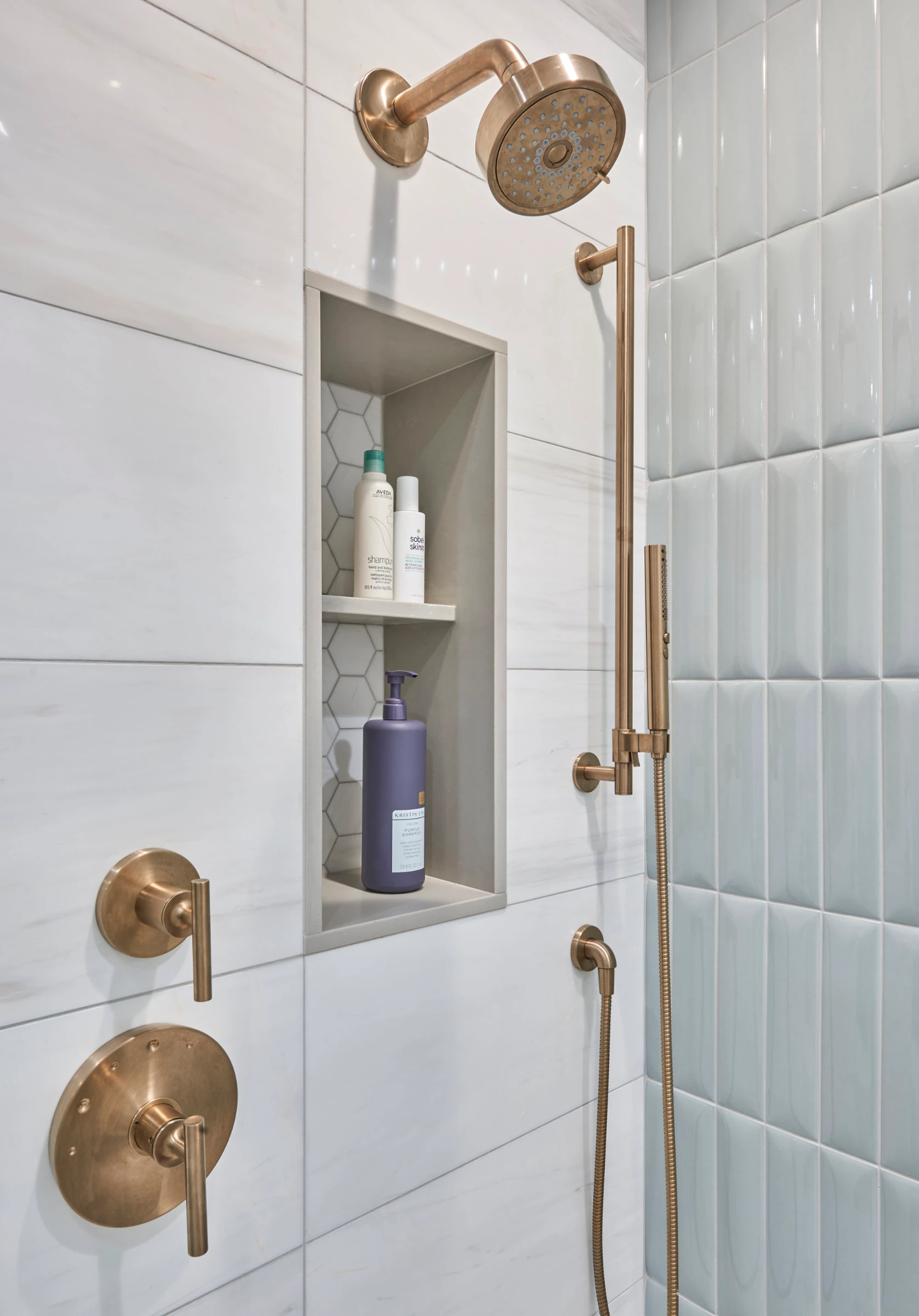Embarking on a bathroom renovation journey is an exciting endeavor that can significantly enhance the comfort and value of your home. It’s crucial to start with a solid plan to ensure the project flows smoothly. Your bathroom renovation checklist will serve as your roadmap, detailing every step of the process.
Understanding the Scope
Understanding the scope of your renovation is the first step in your bathroom overhaul. This includes determining the extent of changes you aim to make. Are you looking to update the fixtures, completely change the layout, or just give your bathroom a cosmetic facelift? It’s vital to define your vision for the space and identify the key elements you want to address, such as flooring, wall coverings, countertops, cabinets, fixtures, and lighting, as these will drastically influence both the aesthetics and functionality.
Setting a Realistic Budget
A budget acts as the financial framework for your renovation. It helps prioritize your needs, allocate funds accordingly, and prevent overspending. Start by listing all the potential expenses, including materials, labor, permits, and contingencies for unforeseen costs. Research the average costs for bathroom renovations in your area to set a realistic budget and ensure you have the funds to complete the project to your satisfaction.
| Category | Estimated Cost Range |
|---|---|
| Materials | $5,000 - $15,000 |
| Construction Labor | $7,000 - $12,000 |
| Designer & Architect | $1,000 - $4,000 |
| Permits | $200 - $1,000 |
| Contingency | 10-20% of total budget |
Source: Home Depot

Assessing Plumbing and Electrical
Before finalizing your renovation plans, it’s essential to assess the current state of your bathroom’s plumbing and electrical systems. Consider the suitability and condition of the existing plumbing and whether it aligns with your new layout or if modifications are necessary. Altering the plumbing layout can be costly, so it’s prudent to work with the existing setup when possible.
Similarly, evaluate your electrical layout to ensure it can support new lighting and electrical fixtures. Keep in mind that projects involving plumbing or electrical changes often require permits. Check with your local building department to understand the specific permits needed for your renovation, as these can vary based on location.
By thoughtfully planning your bathroom overhaul, you establish a strong foundation for the entire renovation process. This includes understanding the scope of the project, setting a realistic budget, and assessing the plumbing and electrical requirements. With this groundwork laid, you’re ready to move forward with designing your dream bathroom and tackling the pre-renovation essentials.
Layout Considerations
The layout is the foundation of your bathroom renovation. To optimize the space:
- Assess your current bathroom’s dimensions and layout.
- Consider the suitability of the existing plumbing layout to avoid costly relocation expenses.
- Determine the placement of key elements such as the bathtub, shower, toilet, and vanity.
- Ensure adequate clearance for doors and drawers to open comfortably.
- Create a layout that maximizes space efficiency and caters to your household’s needs.
Choosing Durable Materials
Selecting the right materials is crucial for ensuring your bathroom stands the test of time:
- Opt for water-resistant and moisture-proof materials for longevity and easy maintenance.
- When choosing tiles, consider size, material (porcelain or ceramic), and color to complement your design.
- Evaluate different flooring options like porcelain tiles, vinyl, or natural stone for durability and slip resistance.
- Select countertops that are not only aesthetically pleasing but also able to withstand the humid bathroom environment.
| Material | Properties | Maintenance Level |
|---|---|---|
| Porcelain Tiles | Water-resistant, durable | Low |
| Ceramic Tiles | Cost-effective, versatile | Low |
| Vinyl | Cost-effective, water-resistant | Low |
| Natural Stone | High-end look, durable | High |
Source: That Homebird Life

Lighting and Ambiance
The right lighting can transform the ambiance of your bathroom:
- Incorporate a mix of lighting solutions, including overhead, task, and accent lighting.
- Consider dimmer switches to adjust the mood and save on energy costs.
- Ensure proper lighting around the mirror for tasks like shaving or applying makeup.
- Select fixtures that complement the style of your bathroom while providing sufficient illumination.
Proper planning, from the thoughtful arrangement of your bathroom’s layout to the careful selection of durable materials and appropriate lighting, sets the stage for a successful renovation. Keep these considerations in mind as you progress through your bathroom renovation checklist, and you’ll be well on your way to creating a space that is both functional and reflective of your personal taste.
Incorporating Efficient Lighting
Good lighting is essential in a bathroom for both practical use and creating ambiance.
- Combine ambient, task, and accent lighting to enhance the space’s functionality and aesthetic appeal.
- Consider energy-efficient options like LED lighting to reduce electricity usage over time.
Each step in this checklist is vital to creating a bathroom that not only looks great but also functions well for your everyday needs. Remember to consider the durability, water resistance, and visual appeal of all materials to ensure your renovated bathroom stands the test of time.

Ventilation and Moisture Control
Proper ventilation is essential to prevent moisture-related issues like mold and mildew. Quality checks should include ensuring that exhaust fans are properly installed and operational. For optimal moisture control, consider the following ventilation systems:
- Exhaust fans rated for the size of your bathroom
- Windows or skylights that provide natural ventilation
According to Home Depot, waterproofing measures such as sealing tiles and grout should also be inspected to confirm they have been correctly applied. This will help to maintain a healthy environment in your renovated bathroom.
Storage and Space Optimization
To keep your bathroom organized and clutter-free, it’s important to maximize storage and optimize space. Quality checks should confirm that all storage solutions are securely installed and functional. Consider the following storage options:
- Built-in cabinets
- Floating shelves
- Vanity units with drawers
Sweeten suggests verifying the accessibility of storage solutions and the efficient use of available space. This could involve checking the ease of opening drawers and cabinets or assessing the placement of shelves for practicality.
Pre-Renovation Essentials
Before diving into the transformation of your bathroom, there are essential steps that need to be taken to ensure your renovation goes smoothly. The pre-renovation phase is all about preparation and making informed decisions. This includes obtaining the necessary permits and hiring the right contractor.
Obtaining Necessary Permits
Before any demolition or construction begins, you must check with your local building department to determine the specific permits required for your bathroom renovation. The need for permits can vary based on your location and the scope of the project. Common renovations that typically require permits include:
- Moving or adding plumbing fixtures
- Altering the electrical layout
- Making structural changes, such as removing or adding walls
- Changing the square footage of the bathroom
Failure to obtain the necessary permits can lead to penalties, fines, and complications during property sales or refinancing. To avoid these issues, here is a checklist of permits you may need to acquire:
| Permit Type | Description |
|---|---|
| Building Permit | Required for structural changes and major renovations. |
| Plumbing Permit | Needed for moving or adding plumbing fixtures. |
| Electrical Permit | Necessary when altering the electrical layout. |
| HOA Permit | Condo Associations require a special permit for any significant changes. |
It’s advisable to hire a professional contractor or designer who is familiar with the local regulations to guide you through the permit process. They can ensure that all necessary permits are obtained before commencing with the renovation.
Hiring the Right Contractor
Choosing the right contractor is crucial for the success of your bathroom renovation. An experienced contractor can help keep your project on schedule, within budget, and up to your standards. Here are some steps to help you select the best contractor for the job:
- Research and gather a list of potential contractors with experience in bathroom renovations.
- Check their references, reviews, and past project portfolios.
- Verify their licenses, insurance, and any certifications.
- Get detailed quotes and compare them.
- Ask about their experience with obtaining permits and handling inspections.
Hiring a professional with expertise in bathroom renovations can provide valuable guidance and oversight throughout the process. They can also assist with material selection, plumbing fixture choices, and lighting decisions to ensure your renovated bathroom meets both your aesthetic and functional needs.
Remember, a solid plan and the right team are the foundation of a successful bathroom renovation. With proper preparation and the right professionals by your side, you’ll be well on your way to creating the bathroom of your dreams.
Demolition and Removal
Before the new can be installed, the old must be cleared out. Demolition and removal are the first practical steps in your renovation journey.
- Clear out existing fixtures, cabinets, and tiles.
- Ensure the space is stripped down to the bare walls and flooring, if necessary.
Wall Covering Selections
The walls of your bathroom require materials that can withstand moisture and are easy to clean.
- Ceramic tiles and vinyl wallpaper are excellent choices for their moisture resistance and ease of maintenance.
- Beadboard can add a decorative touch while still being practical for bathroom conditions.
Countertops and Cabinets
Your countertops and cabinets play a significant role in both the functionality and the aesthetics of your bathroom.
- Durable materials that can handle frequent use and exposure to moisture are ideal.
- Consider the storage needs and the overall design theme when selecting these elements.
Selecting Plumbing Fixtures
Plumbing fixtures are the workhorses of your bathroom, and choosing high-quality fixtures is crucial.
- Faucets, showerheads, and toilets should be both functional and complement the style of your bathroom.
- Evaluate different materials and finishes that will stand the test of time and usage.

Aesthetic Coherence
The final aesthetic of your bathroom should be cohesive and visually pleasing. This involves ensuring that all materials, colors, and fixtures complement each other. Key aspects to check include:
- Color palette uniformity
- Material compatibility
- Fixture style and finish alignment
That Homebird Life recommends a final walk-through to assess the overall style and ambiance, confirming that it matches your vision for the space. Make sure that everything from the tile patterns to the faucet finishes contributes to the aesthetic coherence of your bathroom.
By meticulously addressing ventilation and moisture control, storage and space optimization, and aesthetic coherence, you’ll ensure that your bathroom renovation stands the test of time and meets your expectations for both functionality and style.
Managing the Renovation Timeline
Effectively managing the renovation timeline is critical for a smooth and successful bathroom makeover. Understanding the different phases of renovation and how to address delays will keep you on track.
A well-organized bathroom renovation typically progresses through several distinct stages. The following table breaks down a typical timeline for each phase, based on a 9-week renovation period:
| Week(s) | Phase | Activities |
|---|---|---|
| 2 | Pre-Construction | Finalizing design, budget, permits, and ordering materials |
| 1 | Demolition | Removing old fixtures and materials |
| 2 | Rough-In Installation | Plumbing, electrical, HVAC |
| 1 | Drywall and Painting | Repairing walls and applying new paint |
| 2 | Installations | Installing floors, cabinets, countertops, and plumbing fixtures |
| 1 | Inspections | Ensuring all work meets local codes |
Please note that the timeframe may vary depending on the project’s complexity and scope. It is essential to prepare for potential hiccups and allow some wiggle room in your schedule.
Dealing with Unforeseen Delays
Unanticipated delays can arise during any home renovation project. Factors influencing the duration of a bathroom remodel include the extent of the remodel, availability of materials, labor shortages, and permit delays. Here are some strategies to mitigate these issues:
- Plan Ahead: A detailed bathroom renovation checklist can help keep the project on track and ensure all essential steps are completed.
- Clear Communication: Set clear expectations with your contractor regarding the timeline and be proactive in addressing possible delays.
- Flexibility: Be prepared to adjust your plans as needed, especially if you encounter shipping delays or if materials are out of stock.
- Contingency Budget: Allow for a financial cushion in your budget to cover unexpected costs that may arise due to delays.
- Professional Help: Partner with experienced professionals who can anticipate common issues and have solutions at the ready.
By understanding the typical renovation phases and preparing for unforeseen delays, you can manage your bathroom renovation timeline more effectively, ensuring a smoother transition from old to new.
Final Touches and Quality Checks
Your bathroom remodel is nearing completion, but before you can enjoy your new space, there are a few final touches and quality checks to make sure everything is in good shape. Make sure you inspect everything before you sign a completion memorandum with your contractor. Everything should be in accordance with the contract and free of defects. If in doubt, you can hire an independent inspector. Sure, it will cost you extra, but it could potentially save you thousands of dollars in the future.
